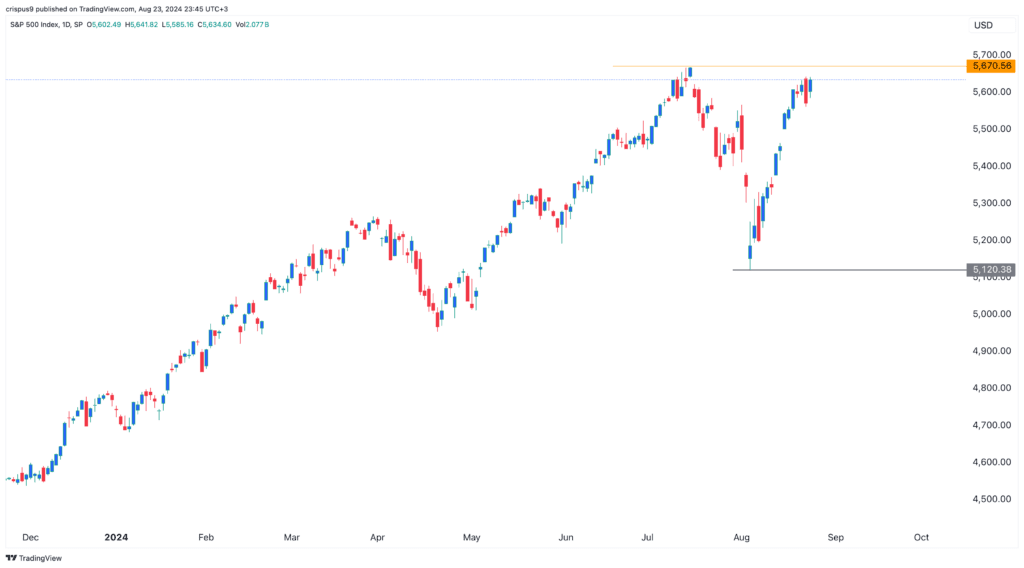Hedge Funds Turn Bearish On S&P 500 (SPY ETF); Double-top Forms
Image Source: Unsplash
- The S&P 500 index has formed a double-top chart pattern on the daily chart.
- Hedge funds and speculators have turned bearish on the fund.
- Jerome Powell pointed to interest rate cuts in the September meeting.
Hedge funds and other speculators have turned increasingly bearish on the S&P 500 index even as it nears its all-time high.
Data released on Friday by the Commodity Futures Trading Commission (CFTC) showed that the net speculative bets on the index dropped to minus 84k last week, a big increase from minus 23.5k a week earlier.
This positioning happened even as the S&P 500 index and its associated ETFs like the SPDR (SPY), iShares (IVV), and Vanguard’s (VOO) continued soaring. The S&P 500 was trading at $5,630 on Friday, a few points below the highest point this year.
Its rally accelerated after Jerome Powell, the Federal Reserve chair, hinted that the bank would start cutting interest rates in the next meeting.
My thoughts on today's #JacksonHole speech by #FederalReserve Chair Jay Powell.https://t.co/n8YEaAigEy#economy #markets #econtwitter #jobs #unemployment #inflation pic.twitter.com/VlqMITUXHO
— Mohamed A. El-Erian (@elerianm) August 23, 2024
The S&P 500 index and other US indices like the Dow Jones and the Russell 2000 do well when the Fed is cutting rates. A likely reason for this is that investors move their funds from low-yielding bonds and move to stocks and other riskier assets.
The index has also been boosted by the recent earnings season, which showed that most companies had a great quarter. The average earnings growth was 10.9%, the highest figure since Q4’21.

A likely reason why hedge funds have turned bearish on the S&P 500 index is that it has formed a double-top chart pattern on the daily chart. In technical analysis, this pattern is characterised by twin peaks and a neckline.
In most cases, an asset that forms a double-top tends to have a sharp reversal. Therefore, bulls will need to push it above the resistance point at $5,670 to invalidate the double-top pattern. If that happens, it will raise the possibility that the index and its ETFs will suffer a big reversal in the near term.
Another reason why a reversal is possible is that the Fed rate cut was already priced in by market participants. As such, there is a risk that traders and investors will sell the news as Powel’s hype fades. Additionally, with the Fed now focused on cutting interest rates, and the Bank of Japan (BoJ) still considering rate hikes, there is a likelihood that the unwinding of the Japanese yen carry trade will resume as we saw earlier this month.
More By This Author:
EIS ETF: Should You Buy During The Escalating Israel Conflict?Charles Schwab Stock Price Is At Risk As Death Cross Nears
Price Of Raw Sugar Falls To Lowest Level In Two Years
Disclosure: Invezz is a place where people can find reliable, unbiased information about finance, trading, and investing – but we do not offer financial advice and users should always ...
more



